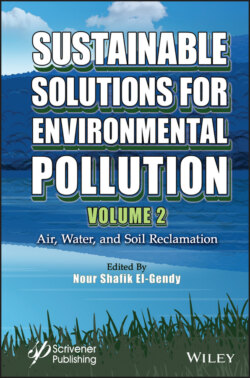Читать книгу Sustainable Solutions for Environmental Pollution, Volume 2 - Группа авторов - Страница 66
1.15.1 Yzeron Watershed Case Study (France)
ОглавлениеIn the Yzeron catchment area (France), water management, both qualitatively and quantitatively, has become a concern for local authorities following a flooding problem. While some of the actions undertaken lead to ecological restoration, their primary intention was to address the flooding risk. Therefore, for water managers, any bioremediation measure must be tested before any implementation in order to verify the absence of any conflict with the primary objectives of the project. From this point of view, it is important for one institution to manage both storm water and wastewater at the same time, in order to take much more consistent action. When expertise and skills are disjointed, the effectiveness of wastewater treatment plants can be mitigated by inadequate (or no) treatment of storm water. If the management of these two sources of pollution are not thought out together, then serious malfunctions may occur and, in the best case, a significant loss of time will be observed in setting up a coherent system. Successful implementation of a bioremediation system requires taking into account the perceptions and aspirations of all stakeholders.
A consultation platform is needed to discuss between stakeholders the various and sometimes contradictory issues, such as water quality, flood risks, biodiversity, land constraints, and private interests. Public meetings to inform local residents and users must be organized at all stages of the project, from its development to its implementation, but also with a view to long-term monitoring. Regular information must be disseminated in the local press. The managers’ websites should provide specific information; site visits can be organized for the public to feel involved in the long term.
A participatory approach promotes the co-construction of the joint project, the discussion of controversial technical points and the sharing of responsibilities for the maintenance and sustainability of the system. Local associations must be involved in the process. Specific constraints and problems can thus be taken into account and anticipated, leading to a significant potential time saving and a more coherent and better shared project. The more participatory the project is, the more inclusive it will be at the territorial level and therefore supported by the greatest number of people who will feel involved. Therefore, the communication, consultation, and participation process must try to broaden the debate as much as possible to the public, trying to show how everyone is more or less concerned by the project. The notions of services rendered (e.g., water resource, self-purification capacity, food, and material production), common goods, and general interest can be mobilized to activate the involvement of citizens in the project.
In order to ensure an operational and sustainable bioremediation system, it is essential to warn the managers of the operation and maintenance of the system set up. Staff training in maintenance and the establishment of a long-term monitoring protocol are therefore elements to be included in the project implementation process itself. If possible, a protocol for monitoring and evaluating the system should be set up, possible adjustments should be planned to adapt the system to local specificities from both a technical and a socio-economic point of view. It is prudent to anticipate the various factors that could interfere with the proper functioning of the system (e.g., implementation of regulations for any nearby construction site).
The installation of explanatory panels in the vicinity of the site would promote the sharing of knowledge, the explanation of issues, and benefits and links with society. It is a question of making people understand the technical and biological functioning of the device, but also the issues around the water resource, and the interest of NBSs, and how every citizen can participate in improving trial in practice changes.
